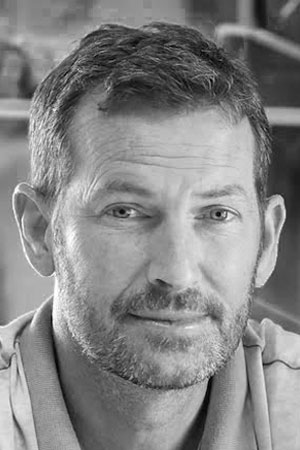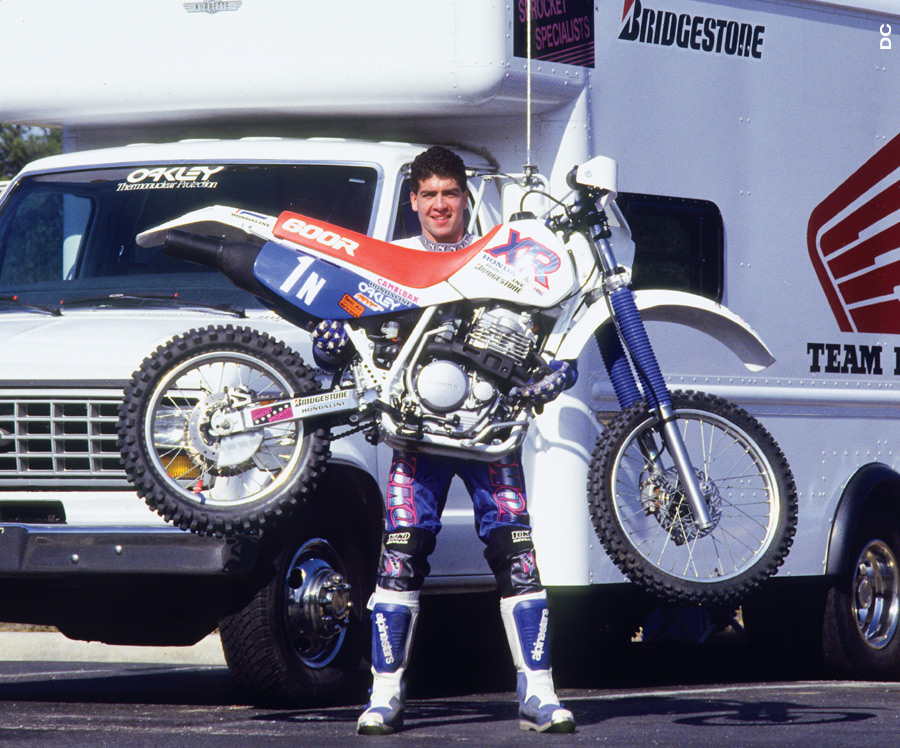



hen our friends Logan and Jordan Martin decided to team up and race the Kenda Northeast 24 Hour Challenge by Arcadia Bark Busters, they decided to do it aboard an old Honda XR400, Scott Summers-style. It was an odd choice for a grueling race, as those mid-nineties XR thumpers were as heavy as they were hard to start. The Martins, as you will read in their feature “All Night Long” that begins on page 100, found themselves with a whole new appreciation for what Summers managed to accomplish in his AMA Motorcycle Hall of Fame career.


Of course, Summers did much more than just lift up his bike for photos. The Kentucky native won nine major AMA titles between GNCC and the National Hare Scrambles Series, as well as three International Six Days Enduro gold medals. He also took 46 overall wins in the GNCC Series alone, a record that stood until Kailub Russell came along.
Being a dominant champion on an unorthodox bike wasn’t Summers’ real legacy. It was how he conducted his career—the professional and business acumen he brought to his chosen form of racing—that made Scott Summers the most influential off-road racer since On Any Sunday icon Malcolm Smith. Before Summers came along, off-road racing in America was more or less an amateur sport. Even legends like “King” Richard Burleson and Ed Lojak had regular full-time jobs while they were racing, because there really wasn’t much money to be made racing in the woods.
What the media-savvy Summers and his mechanic-turned-business manager Fred Bramblett did to change the entire sport was to approach off-road as if it were professional motocross. With only limited support at first from American Honda—they weren’t even paying contingency money for those who chose to race XR models—Summers and Bramblett took it upon themselves to present themselves as a Honda factory team no different than what the brand was doing for SX/MX riders like Rick Johnson and Jeff Stanton. They painted their own box van to look like a factory support vehicle, made their own autograph stock, set up their own open houses at dealerships near racing events, and even built a mainstream media-friendly sizzle reel that they used as a calling card to get local TV stations to mention both Summers and the event. And when he won on Sundays—which began happening more and more often—they mentioned Team Honda’s Scott Summers again on Monday evening’s news.
Needless to say, Honda soon took notice, as did the West Coast-based off-road magazine editors. Summers was not only fascinating, he was easy to write about. Everyone loved his personality, his competitiveness, his clean-cut image, and his seemingly out-of-place race bike. He was also a winner and a true champion, blazing a trail for the way off-road racers presented themselves in order to get the factories to take notice.
The fact that Scott Summers did it all on an XR600 that he could lift was just the icing on the cake. ![]()

